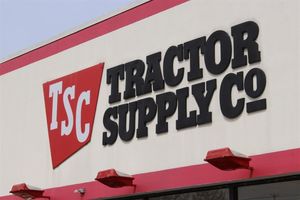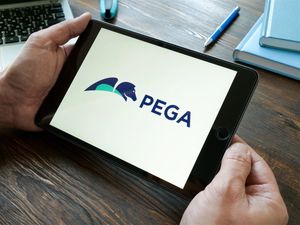Financial News
Blue Apron Provides Details Regarding Next Phase of Strategic Plans and Outlook at Inaugural Investor Day
- Introduced Next Phase of Strategy Towards Path to Adjusted EBITDA Profitability in 2023 and Free Cash Flow Generation in 2024
- Highlighted Drivers of Success Behind Eight Straight Quarters of Elevated Customer Metrics
- Outlined Plans to Drive Customer Growth Through Targeted Marketing Spend, Product Innovation, Customizations, Add-ons, and Non-Subscription Offerings
- Targeted Long-Term Steady-State Variable Margin of 40% and PTG&A of 20% of Revenue
- Discussed Strategy to Responsibly Deploy Recent Equity Capital Raised to Invest in Platform to Help Execute Its New Strategy
Blue Apron (NYSE: APRN) hosted its inaugural Investor Day on May 10, 2022 at its fulfillment center in Linden, New Jersey. Management unveiled The Next Course strategy, and discussed the company’s strategic plans and outlook relating to its business, including details on its path to achieve adjusted EBITDA profitability in 2023 and positive free cash flow in 2024. The company also provided greater visibility into its near-term financial and operational performance expectations and targets.
Linda Findley, Blue Apron’s President and Chief Executive Officer, commented, “This is an exciting time for Blue Apron as we step into the next phase of our turnaround. With the customer at the center of everything we do, we are moving beyond the three pillar strategy that we introduced shortly after I joined Blue Apron in 2019. The next phase of our strategy, which we have titled The Next Course, will be focused on delivering long-term sustainable growth, and sets our sights on profitability at the adjusted EBITDA level in 2023. It also positions our ESG programs as an enabler of our long-term ambitions, simultaneously driving accountability to the environment, customer growth and employee engagement.”
The Next Course strategy outlines a path to sustainable growth, profitability and shareholder return. Blue Apron’s long-term goal is for the company to be the first choice for consumers who seek out curated food experiences that meet the needs of their household and enhance their lives. The company plans to expand beyond traditional meal kit subscriptions, including building an ecosystem of partners that creates Better Living Through Better Food™.
Blue Apron identified three objectives it will simultaneously target to drive growth over the next three years:
- Curated Customer Experiences - Drive customer growth and expand market share in target segments by deepening engagement through an ecosystem of marketing, partnerships and new products.
- Scalable Platform - Optimize tech and operational infrastructure to deliver an agile, scalable and seamless e-commerce experience with subscription at its core.
- Sustainable Profit - Execute ESG initiatives that meet customer priorities, drive employee engagement and create shareholder value.
Randy Greben, Blue Apron’s Chief Financial Officer, discussed the company’s 2022 financial outlook, identified new areas for growth, and reviewed the company’s target of achieving adjusted EBITDA profitability in 2023 and positive free cash flow generation in 2024.
Greben commented, “Our strengthened balance sheet positions us to execute against the next evolution of our strategic plan with targeted marketing spend, continued investment in product innovation, and the build out of other revenue streams via partnerships, add-ons and marketplace offerings. We believe we can not only make meaningful progress on our path to profitability, but can do so while staying true to our guiding principles to serve all of our stakeholders. We see our path to 2024 - with set goals of having at least 500,000 customers, at least $700 million in revenue, with adjusted EBITDA margins of more than 2% and positive cash flow generation. We are excited about our prospects and all the different areas of growth that we see available to us.”
Financial Outlook
The company announced the following targets:
- Adjusted EBITDA profitability in FY 2023; >+2% Adjusted EBITDA in 2024
- 500,000 Customers in 2024
- Positive operating cash flow in 2024
- Long-term variable margin around 40%, and PTG&A around 20% of revenue
The outlook and targets in this press release, reflect assumptions regarding the company’s business, including the anticipated consistent benefit to the company’s business from the execution and acceleration of the company’s strategic growth initiatives, and the impact of the planned use of proceeds from the equity capital raises the company completed November 2021, February 2022 and April 2022, and the expected proceeds from a $20 million equity commitment, as well as the cash impact of certain marketing contracts, to increase investments in marketing and technology initiatives and infrastructure, as well as continued operational improvements. The outlook and targets also assumes that the company will not experience any unforeseen significant disruptions in its fulfillment operations or supply chain.
Investor Day Replay
To watch a replay of the investor day, please visit the company’s investor relations website: https://investors.blueapron.com/events-and-presentations
About Blue Apron
Blue Apron’s vision is Better Living Through Better Food™. Launched in 2012, Blue Apron offers fresh, chef-designed recipes that empower home cooks to embrace their culinary curiosity and challenge their abilities to see what a difference cooking quality food can make in their lives. Through its mission to spark discovery, connection and joy through cooking, Blue Apron continuously focuses on bringing incredible recipes to its customers, while minimizing its carbon footprint, reducing food waste, and promoting diversity and inclusion.
Forward-Looking Statements
This press release includes statements concerning Blue Apron Holdings, Inc. and its future expectations, plans and prospects that constitute "forward-looking statements" within the meaning of the Private Securities Litigation Reform Act of 1995. For this purpose, any statements contained herein that are not statements of historical fact may be deemed to be forward-looking statements. In some cases, you can identify forward-looking statements by terms such as "may," "should," "expects," "plans," “forecasts,” "anticipates," "could," "intends," "target," "projects," "contemplates," "believes," "estimates," "predicts," "potential," or "continue," or the negative of these terms or other similar expressions. The forward-looking statements in this press release are only predictions. Blue Apron has based these forward-looking statements largely on its current expectations and projections about future events and financial trends that it believes may affect its business, financial condition and results of operations. These forward-looking statements speak only as of the date of this press release and are subject to a number of risks, uncertainties and assumptions including, without limitation, the company’s ability, including the timing and extent, to successfully support the acceleration and execution of its growth strategy and to meet its outlook forecasts (including the ability to successfully increase marketing and technology improvements on the planned timeline), cost-effectively attract new customers and retain existing customers, including its ability to sustain any increase in demand resulting from both its growth strategy and the COVID-19 pandemic, and its ability to continue to expand its product offerings and distribution channels, and to continue to execute operational efficiency practices; changes in consumer behaviors, tastes and preferences that could lead to changes in demand, including as a result of, among other things the impact of inflation or other macroeconomic factors, and to some extent, long-term impacts of COVID-19 on consumer behavior, on consumer spending habits; the company’s ability to attract and retain qualified employees and personnel in sufficient numbers, both generally and in light of nationwide labor shortages as a result of COVID-19 or otherwise; any material and adverse impact of the COVID-19 pandemic or any future surges, including as a result of new variants and subvariants of the virus, on the company’s operations and results, such as challenges in employee recruiting and retention, any prolonged closures, or series of temporary closures, of one or both of its fulfillment centers, supply chain or carrier interruptions or delays, and any resulting need to cancel or shift customer orders; the company’s expectations regarding its expenses and net revenue, including the impact of its recent price increase for our meal kit and wine products, its increased marketing expenditures, and its ability to grow revenue and adjusted EBITDA and to achieve or maintain profitability; the company’s expectations regarding, and the stability of, its supply chain, including potential shortages, interruptions and/or increased costs in the supply or delivery of ingredients, and parcel and freight carrier interruptions or delays and/or higher freight or fuel costs, as a result of inflation or otherwise; the company’s ability to effectively compete; the company’s ability to maintain and grow the value of its brand and reputation; the company’s ability to achieve its environmental, sustainability and corporate governance goals in its anticipated timeframe or at all; the company’s ability to maintain food safety and prevent food-borne illness incidents and its susceptibility to supplier-initiated recalls; the company’s ability, including the timing and extent, to sufficiently manage costs and to fund investments in its operations in amounts necessary to maintain compliance with financial, and other covenants under its indebtedness while continuing to support the execution and acceleration of its growth strategy; the company’s ability to comply with modified or new laws and regulations applying to its business, or the impact that such compliance may have on its business; the company’s vulnerability to adverse weather conditions, natural disasters, wars, and public health crises, including pandemics; the company’s ability to protect the security and integrity of its data and protect against data security risks and breaches; the company’s ability to obtain and maintain intellectual property protection; and other risks more fully described in the company’s Annual Report on Form 10-K for the year ended December 31, 2021 filed with the SEC on February 25, 2022 and the company’s Quarterly Report on Form 10-Q for the quarter ended March 31, 2022 filed with the SEC on May 9, 2022 and in other filings that the company may make with the SEC in the future. The company assumes no obligation to update any forward-looking statements contained in this press release, whether as a result of any new information, future events, or otherwise.
Use of Non-GAAP Financial Information
This press release includes non-GAAP financial measures, adjusted EBITDA and free cash flow, that are not prepared in accordance with, nor an alternative to, financial measures prepared in accordance with U.S. generally accepted accounting principles (“GAAP”). In addition, these non-GAAP financial measures are not based on any standardized methodology prescribed by GAAP and are not necessarily comparable to similarly-titled measures presented by other companies.
The company defines adjusted EBITDA as net earnings (loss) before interest income (expense), net, other operating expense, gain (loss) on extinguishment of debt, other income (expense) net, benefit (provision) for income taxes and depreciation and amortization, adjusted to eliminate share-based compensation expense. The company presents adjusted EBITDA because it is a key measure used by the company’s management and board of directors to understand and evaluate the company’s operating performance, generate future operating plans and make strategic decisions regarding the allocation of capital. In particular, the company believes that the exclusion of certain items in calculating adjusted EBITDA can produce a useful measure for period-to-period comparisons of the company’s business. Further, Blue Apron uses adjusted EBITDA to evaluate its operating performance and trends and make planning decisions, and it believes that adjusted EBITDA helps identify underlying trends in its business that could otherwise be masked by the effect of the items that the company excludes. Accordingly, Blue Apron believes that adjusted EBITDA provides useful information to investors and others in understanding and evaluating its operating results, enhancing the overall understanding of the company’s past performance and future prospects, and allowing for greater transparency with respect to key financial metrics used by its management in its financial and operational decision-making.
There are a number of limitations related to the use of adjusted EBITDA rather than net income (loss), which is the most directly comparable GAAP equivalent. Some of these limitations are:
- adjusted EBITDA excludes share-based compensation expense, as share-based compensation expense has recently been, and will continue to be for the foreseeable future, a significant recurring expense for the company’s business and an important part of its compensation strategy;
- adjusted EBITDA excludes depreciation and amortization expense and, although these are non-cash expenses, the assets being depreciated may have to be replaced in the future;
- adjusted EBITDA excludes other operating expense, as other operating expense represents non-cash impairment charges on long-lived assets, a non-cash gain, net of termination fee, on lease termination, and restructuring costs;
- adjusted EBITDA excludes loss on extinguishment of debt as this represents a non-cash charge;
- adjusted EBITDA does not reflect other (income) expense net, as this represents changes in the fair value of the liability-classified warrant obligation as of each reporting period;
- adjusted EBITDA does not reflect interest expense, or the cash requirements necessary to service interest, which reduces cash available to us;
- adjusted EBITDA does not reflect income tax payments that reduce cash available to us; and
- other companies, including companies in the company’s industry, may calculate adjusted EBITDA differently, which reduces its usefulness as a comparative measure.
The company defines free cash flow as net cash from (used in) operating activities less purchases of property and equipment. The company presents free cash flow because it is used by the company’s management and board of directors as an indicator of the amount of cash the company generates or uses and to evaluate the company’s ability to satisfy current and future obligations and to fund future business opportunities. Accordingly, Blue Apron believes that free cash flow provides useful information to investors and others in understanding and evaluating its operating results, enhancing the overall understanding of the company’s ability to satisfy its financial obligations and pursue business opportunities, and allowing for greater transparency with respect to a key financial metric used by its management in its financial and operational decision making.
There are a number of limitations related to the use of free cash flow rather than net cash from (used in) operating activities, which is the most directly comparable GAAP equivalent. Some of these limitations are:
- free cash flow is not a measure of cash available for discretionary expenditures since the company has certain non-discretionary obligations such as debt repayments or capital lease obligations that are not deducted from the measure; and
- other companies, including companies in the company’s industry, may calculate free cash flow differently, which reduces its usefulness as a comparative measure.
Because of these limitations, adjusted EBITDA and free cash flow should be considered together with other financial information presented in accordance with GAAP.
Use of Certain Customer Metrics
This press release references the number of the company’s “Customers”, which is a key metric that the company uses to evaluate its business and operations, measure its performance, identify trends affecting its business, project its future performance, and make strategic decisions. You should read references to Customers in conjunction with the company’s financial statements. The company defines and determines Customers as follows:
Customers
The company determines its number of Customers by counting the total number of individual customers who have paid for at least one Order from Blue Apron across the company’s meal, wine or market products sold on its e-commerce platforms in a given reporting period.
Orders
The company defines Orders as the number of paid orders by Customers across the company’s meal, wine and market products sold on its e-commerce platforms in any reporting period, inclusive of orders that may have eventually been refunded or credited to customers.
View source version on businesswire.com: https://www.businesswire.com/news/home/20220511005684/en/
Contacts
Media Contact
Muriel Lussier
Blue Apron
muriel.lussier@blueapron.com
Investor Contact
Tip Fleming
Blue Apron
investor.relations@blueapron.com
More News
View More




Recent Quotes
View More
Quotes delayed at least 20 minutes.
By accessing this page, you agree to the Privacy Policy and Terms Of Service.



